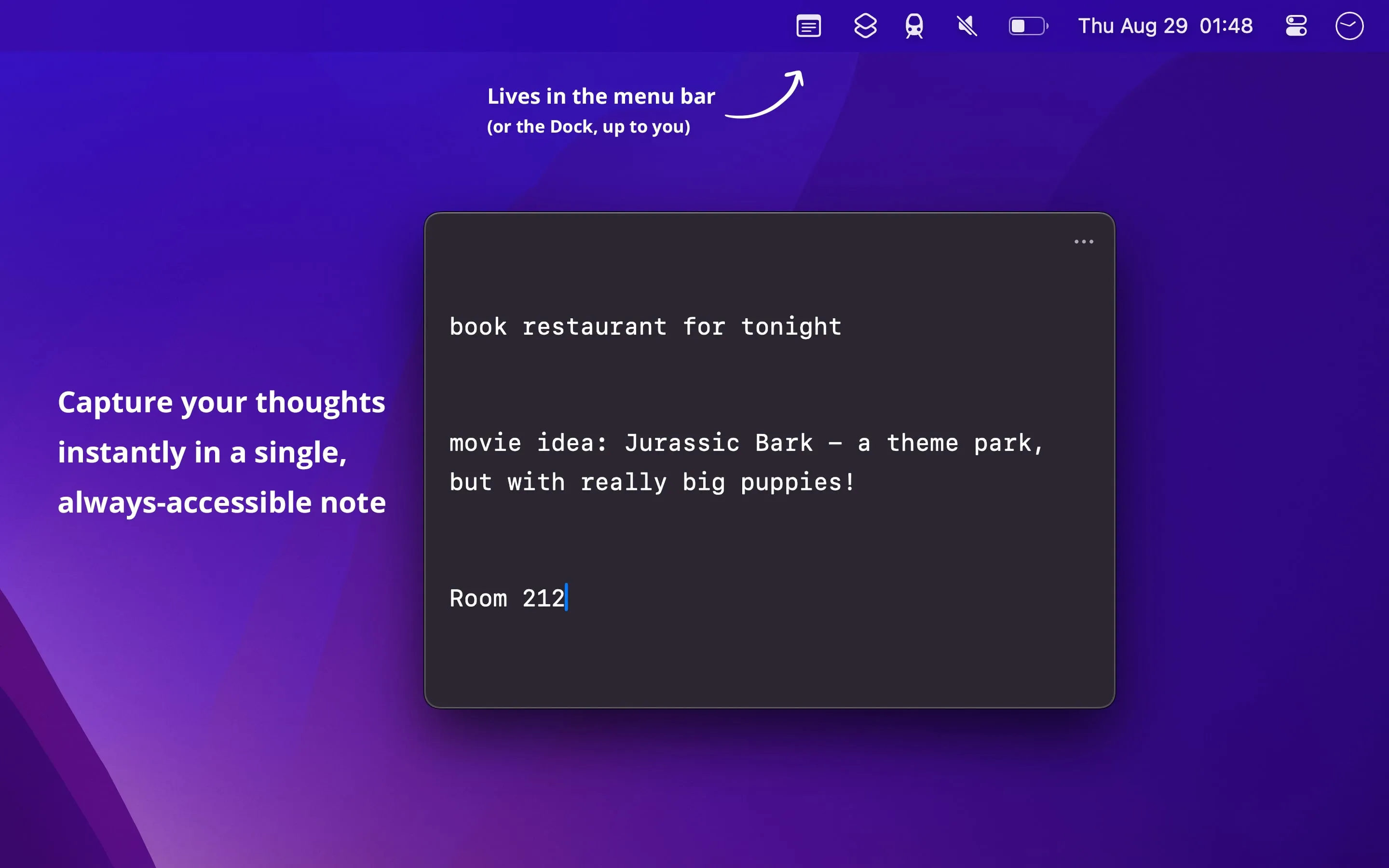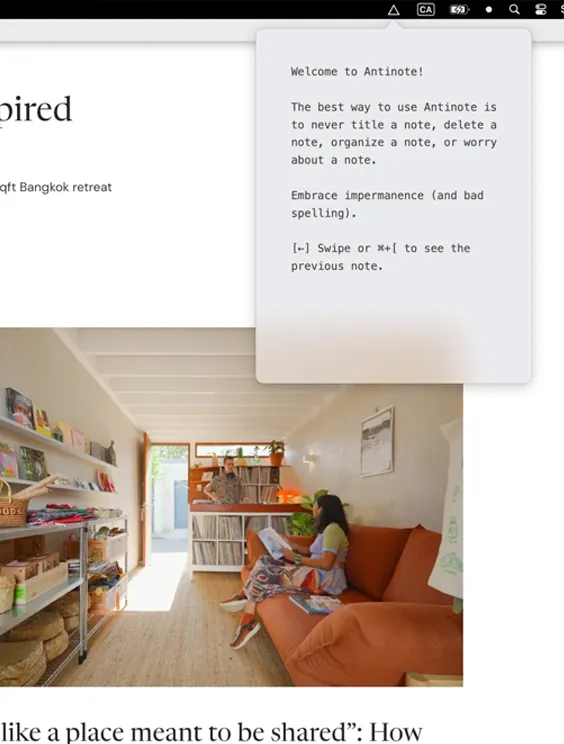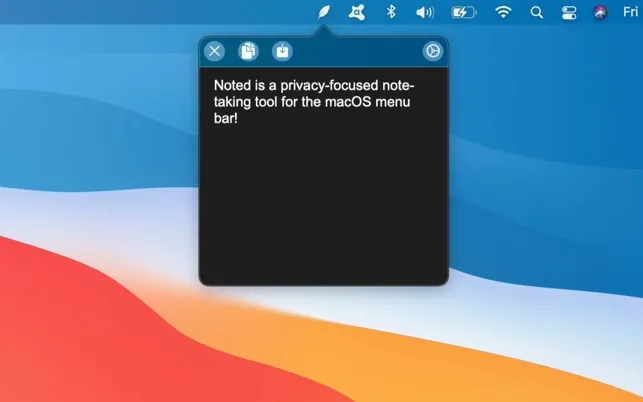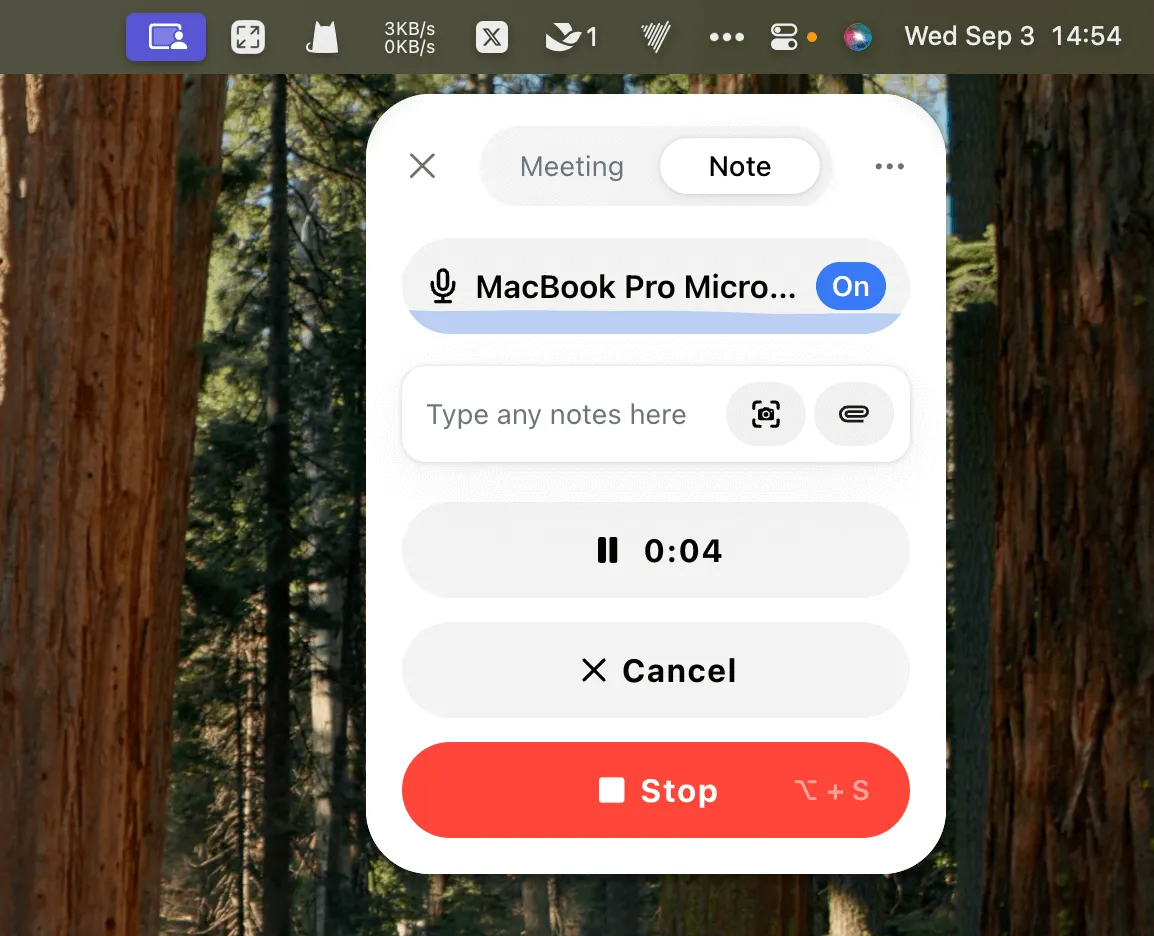I have a confession: I’ve lost more good ideas to app switching than I care to admit. You know the scenario - something brilliant crosses your mind while you’re deep in code, you reach for Apple Notes, wait for it to load, decide which folder it belongs in, and by the time you’re ready to type, the thought has completely evaporated. After years of this frustration, I went searching for menu bar apps that could capture thoughts faster than they disappear.
What I discovered was four distinct philosophies about quick note-taking, each solving a different aspect of the problem. Some focus on radical simplicity, others on temporary thinking, and one brings AI into the equation. After testing each for several weeks on my M2 MacBook Air and Mac Mini M4, I’ve found that the best solution depends entirely on how your brain processes fleeting thoughts.
The One-Note Universe

Scratchpad ($4.99) completely changed how I think about temporary notes. Created by Sindre Sorhus, it’s not a note-taking app in the traditional sense - it’s a single, persistent text field that exists everywhere. No folders, no tags, no decisions about where to put something. Just one note that syncs instantly across Mac, iPhone, iPad, and even Apple Watch.
I set my hotkey to Command+Shift+S, and now capturing thoughts takes literally two seconds. The interface is deliberately minimal - just text on a translucent background. What makes it brilliant is how it encourages temporary thinking. Unlike permanent note apps, Scratchpad is designed for thoughts that come and go. Shopping lists, random commands I need to remember, half-formed ideas that might become something later.
The cross-platform sync through iCloud is remarkably fast. I’ll start typing a thought on my Mac, grab my iPhone seconds later, and the text is already there. The Apple Watch integration means I can dictate ideas while walking. Everything stays in Apple’s ecosystem with no third-party servers or analytics.
The limitation is intentional: plain text only, no formatting, no images. If you need rich content, this isn’t for you. But for pure thought capture, Scratchpad provides exactly the right amount of functionality - no more, no less.
Beautiful Temporary Thinking

Antinote ($5) takes a different approach - it’s designed specifically for notes that disappear. While Scratchpad keeps one persistent note, Antinote encourages you to capture thoughts, use them, then swipe them away. Press Option+A anywhere on your Mac, and it appears instantly. Type your thought, swipe left to clear, start fresh.
What impressed me during my three weeks of testing was the natural gesture navigation. Swipe right for history, up and down to navigate between notes. No mouse required, no menu hunting. The math capabilities caught me by surprise - type “50 * 1.2” and it calculates inline. Currency conversions happen automatically. It’s like having a smart calculator that understands natural language.
The 14 built-in themes are genuinely beautiful, from minimal monochrome to vibrant gradients. I’m using “Mononoke” - dark with subtle green accents that match my terminal. Everything stays completely local with no cloud sync, which is both a limitation and a privacy feature. If you need cross-device access, Antinote won’t work for you. But for Mac-only workflows, it’s nearly perfect.
Privacy-First Simplicity

Noted ($0.99) is the most minimal of the bunch, and that’s exactly its strength. It lives in your menu bar, appears with Option+Backtick, and does nothing else. No formatting, no organization, no sync - just a dark text window that captures whatever you type and saves it automatically.
During my testing, what stood out was the complete privacy focus. The developer explicitly states “no information leaves your Mac” - no analytics, no cloud services, no account creation. In an era where every app wants to upload your data somewhere, this local-first approach feels refreshing.
The response time is essentially instant. No loading animations, no delays, just immediate text input. Perfect for capturing URLs while browsing, terminal commands mid-workflow, or random thoughts that don’t belong in proper notes yet. At $0.99, it’s the most affordable option and delivers exactly what it promises.
Voice-Powered Intelligence

VoiceNotes (Free, $99.99/year for unlimited) brings AI into the quick capture equation. Instead of typing, you speak your thoughts, and the app not only transcribes them but generates summaries and lets you search recordings with natural language queries.
Hit Option+N to start recording, and VoiceNotes transcribes in real-time across 100+ languages. After testing it with colleagues in China, I was impressed by how it handled both English and Mandarin in the same recording. The AI summaries are genuinely useful - after I ramble about a project for five minutes, it pulls out the key points automatically.
The search capability transformed how I retrieve information. I can ask “What did I say about the Q4 budget?” and get specific answers from weeks of recordings. The universal dictation feature (hold fn key) lets you dictate into any application without switching context.
The subscription model ($99.99/year for unlimited features) might deter some, but for anyone who thinks better out loud than in writing, the AI processing and cross-device sync justify the cost.
Finding Your Capture Style
After weeks of testing, I’ve realized there’s no universal solution because we all process fleeting thoughts differently. Scratchpad works best for people who need one accessible place for temporary information. Antinote suits those who like to clear their mental workspace regularly. Noted is perfect for privacy-conscious users who want zero complexity. VoiceNotes excels for verbal thinkers who prefer speaking to typing.
I’ve ended up using a combination: Scratchpad for persistent temporary notes that need cross-device access, Antinote for quick calculations and truly temporary thoughts, and VoiceNotes for longer brainstorming sessions. The key is choosing tools that match your thinking patterns rather than forcing yourself to adapt to the software.
These apps share one crucial trait - they all appear instantly with a keyboard shortcut, removing the friction between having a thought and capturing it. In a world of increasingly complex productivity systems, sometimes the best solution is the one that gets out of your way fastest.